Ideally, you’d have the time and budget to order every t-shirt you plan to sell, hire a professional model, and shoot breathtaking product photos. But the reality? That’s rarely feasible, especially if you’re launching a new brand or rolling out fresh designs every week. That’s why t-shirt templates (or “mockups”) are game-changers.
T-shirt templates help you:
- Visualize your design on an actual garment before production.
- Speed up your workflow—no waiting for samples to arrive or scheduling photo shoots.
- Present polished, realistic images that entice customers to click “buy now.”
With so many mockup tools and template styles available, it’s never been easier to make your apparel look studio-ready (even if you’re working from your kitchen table). Here’s everything you should know about t-shirt templates.
Table of Contents
2 types of t-shirt templates
1. Online t-shirt mockup generators
2. Downloadable t-shirt template files
A quick look at where to find great t-shirt templates
Online mockup generators
Downloadable mockup & template files
Key factors to consider when choosing the right template
1. Style/theme
2. Color & lighting
3. Perspective & angles
4. Realism
5. High resolution
The best practices for using t-shirt templates
1. Work with the right files
2. Remove backgrounds properly
3. Use CMYK for print
4. Order samples
5. Test the placement
6. Keep it consistent across your store
Rounding up
2 types of t-shirt templates
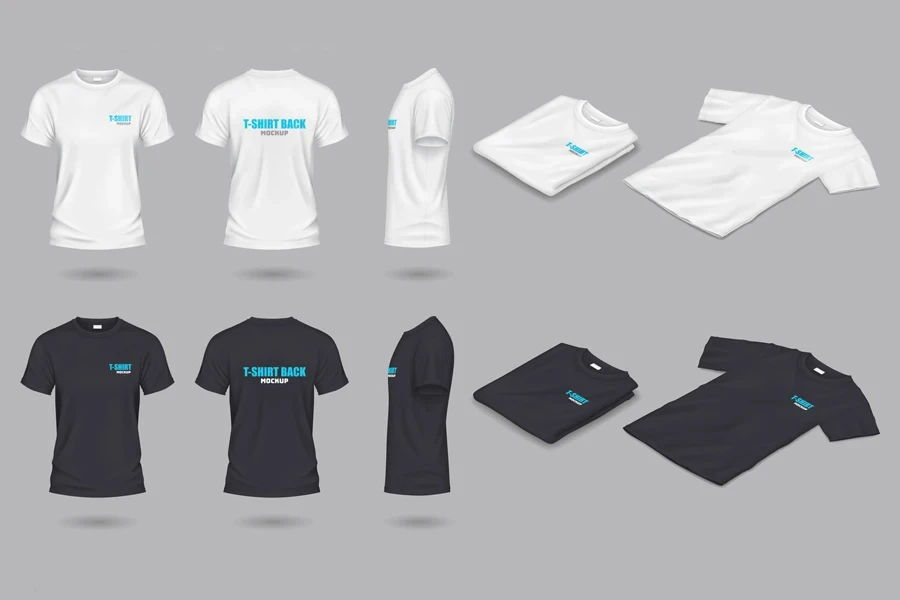
Generally, you have two main avenues to explore when choosing t-shirt templates:
1. Online t-shirt mockup generators
These web-based tools let you upload a design, drag it into place, and generate an instant mockup. It’s a great option for a simple, user-friendly experience with minimal editing know-how.
2. Downloadable t-shirt template files
These are usually Photoshop (PSD) or Illustrator files you can edit yourself. They’re great for full creative control, layering, or advanced edits (like matching folds and fabric textures).
A quick look at where to find great t-shirt templates
Online mockup generators
1. Printful
- Best for: Print-on-demand sellers who want quick mockups for t-shirts, hoodies, etc.
- Notable features: Transparent backgrounds, a wide range of garment options, and direct integration with Shopify.
2. Printify
- Best for: Quickly switching between different shirt colors and sizes.
- Notable Features: Drag-and-drop interface, easy to edit front/back, and multiple t-shirt styles.
3. Gelato
- Best for: Adding multiple design variants at once.
- Notable features: Access a huge library of stock photos and ships from nine countries (helpful if you also use Gelato’s fulfillment).
4. Shirt-King (EU-based)
- Best for: European businesses who want automated order sync and direct fulfillment.
- Notable Features: Built for the EU market and integrates seamlessly with Shopify.
5. Custom ink
- Best for: Visualizing designs on various shirt styles, from tanks to raglans.
- Notable features: It lets you order shirts directly after generating your mockup.
6. Smartmockups
- Best for: Finding photorealistic free mockups (including v-necks, hoodies, and more).
- Notable features: High-resolution images from multiple angles, including mockups for mugs, phone cases, etc.
7. Styria Shirts (EU-based)
- Best for: European sellers want an all-in-one design, embroidery, and fulfillment platform.
- Notable features: it has over 200 customizable products and integrates with Shopify.
8. Placeit
- Best for: Video mockups that show how fabric moves and drapes on a model.
- Notable features: Massive library of mockup scenes, easy to use without design skills, and many apparel styles available.
9. Shirtee.Cloud (EU-based)
- Best for: European sellers who want to list products on a built-in marketplace.
- Notable features: 50+ product types, 4,000 variations, and focuses on white-label shipping.
Downloadable mockup & template files
If you’re handy with Photoshop or Illustrator, these websites offer PSD t-shirt templates with advanced editing capabilities:
1. Creative Market
- Best for PSD templates for different products, including brand-specific cuts.
- Pricing: It is typically a few dollars per template, but you’ll get commercial licenses to use the templates as often as you want.
2. Go Media
- Best for: Mockups that include side-view angles for more complex designs.
- Perk: You can buy entire packs for hoodies, t-shirts, and more.
3. Graphic burger
- Best for: Free, high-quality PSDs (like front/back or v-neck tee templates).
- Note: You’ll need Photoshop to edit these mockups.
4. Behance
- Best for: A huge variety of creative templates from professional designers (free and paid).
- Tip: Use filters to find relevant file formats or design styles.
5. Freepik
- Best for: Free templates with different shirt cuts (crewneck, sports tees, t-shirts with cool typography, etc.).
- Perk: It also offers vector graphics if you want simpler, non-photorealistic mockups.
6. Pixelbuddha
- Best for: Photorealistic images that match the folds and fabric drape.
- Perk: Some “lookbook-style” templates that go beyond flat-lays or hanger shots.
7. Pixeden
- It is best for Unique angles, such as folded T-shirts or tank tops on hangers. You can also download free mockups for shoeboxes and books.
- Perk: Offers free and premium tiers, so you can test freebies before committing.
Key factors to consider when choosing the right template
Consider these key details before you dive in:
1. Style/theme
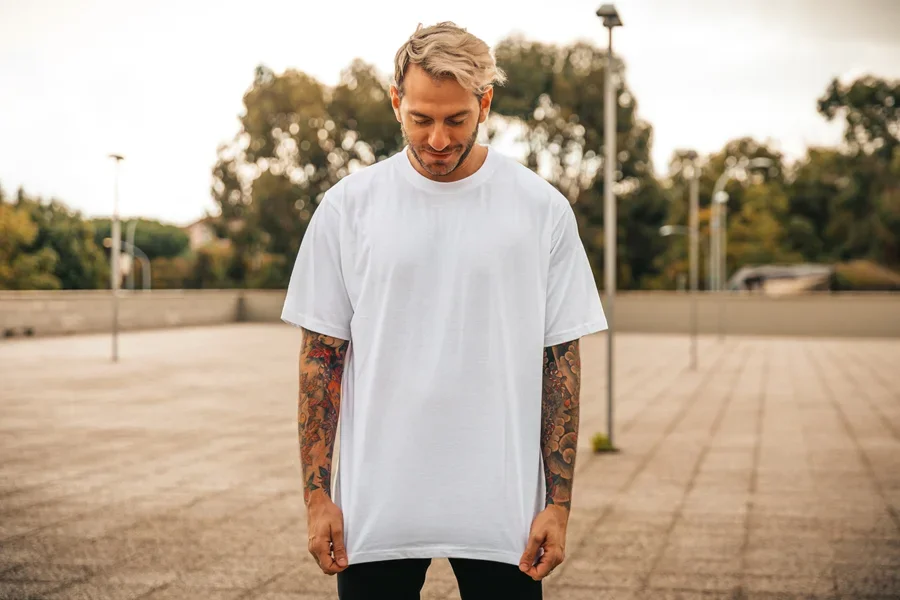
If you’re marketing to gym enthusiasts, choose a mockup with someone working out or wearing athletic gear. If you’re a more laid-back brand, you might want a casual lifestyle setting or just a hanger with a minimalist backdrop.
2. Color & lighting
Ensure the template or mockup color complements your design. Bright designs can pop on darker shirts, but if your design is pastel, you want a darker background. So, pay attention to overall lighting so your design doesn’t get washed out.
3. Perspective & angles
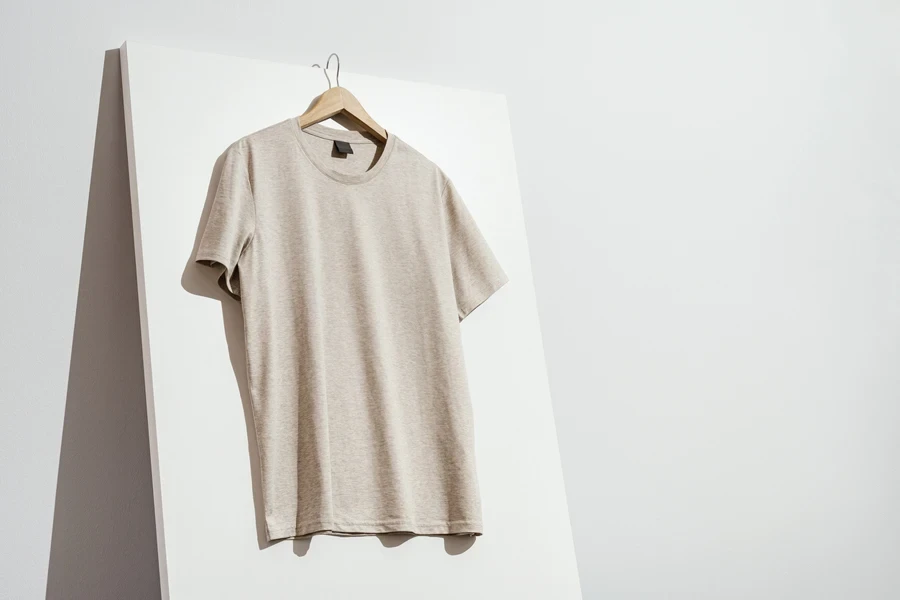
If you have a design on the back or sleeves, choose mockups showing those areas. A front-only mockup can hide any amazing design you place on the back or sides.
4. Realism
Use mockups with subtle folds and shadows—they can make your design look more authentic. If templates look overly “flat” and digital, consumers may not feel the push to buy.
5. High resolution
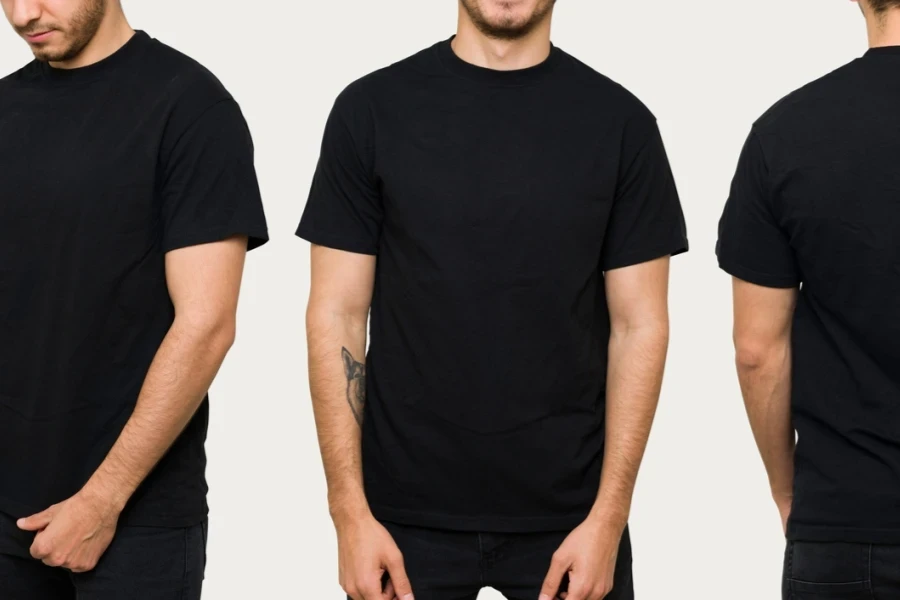
Always choose high-resolution files. Customers will likely zoom in on your images, so ensure they are high-resolution enough not to look pixelated or fuzzy.
The best practices for using t-shirt templates
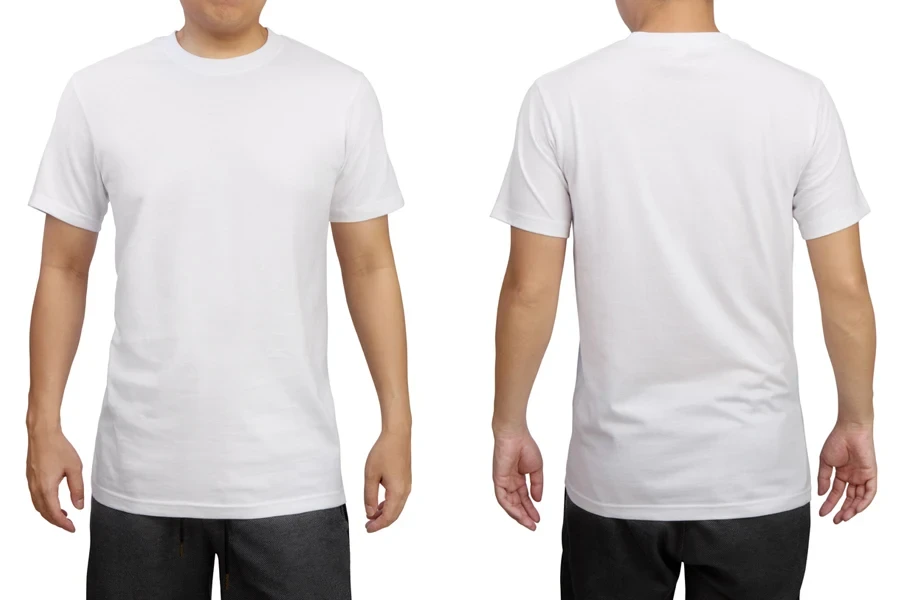
1. Work with the right files
Vector formats (like AI or EPS) are your best friend for scalable designs without quality loss. Otherwise, you can use PNGs or TIFFs, but they should be at least 300 DPI (dots per inch) to avoid pixelation. JPEGs are a no-go area for t-shirt templates.
2. Remove backgrounds properly
If your designs have cutouts, export them with a transparent background. This will help them blend seamlessly with the mockup’s color.
3. Use CMYK for print
Designs for printing should be in CMYK color mode (rather than RGB) to help keep colors true to how they’ll look when ink hits the shirt. Nevertheless, RGB is still fine for display purposes only (like your store’s website).
4. Order samples
Don’t skip this tip if you’re working with print-on-demand. A mockup can look amazing on screen but won’t when printed out—so seeing the real deal is always a great idea. For this reason, always order a sample to confirm that the colors, size, and alignment match your mockup.
5. Test the placement
Check multiple template angles if your design is large or extends across the chest and sleeves. That way, you can catch it when the design looks off-center or clip awkwardly around the seams and make corrections.
6. Keep it consistent across your store
Choose a consistent mockup style across your entire product line. This continuity makes your store look more professional and helps customers compare options quickly.
Rounding up
Whether you’re new to the apparel game or looking to level up your online store, t-shirt templates help you show off designs in their best light—no pro camera equipment necessary. By choosing the right mockups (either through online generators or PSD files), you’ll create a cohesive, professional look that appeals to your target audience.
Remember:
- Pick your template style and color scheme with care.
- Keep consistency across products to reinforce brand identity.
- Use high-resolution files and correct color profiles to avoid unpleasant surprises in printing.
- Always test with a sample if you’re going the print-on-demand route.
When done right, T-shirt mockups can become powerful sales tools. They transform conceptual designs into clickable, buyable items that help your business stand out.




